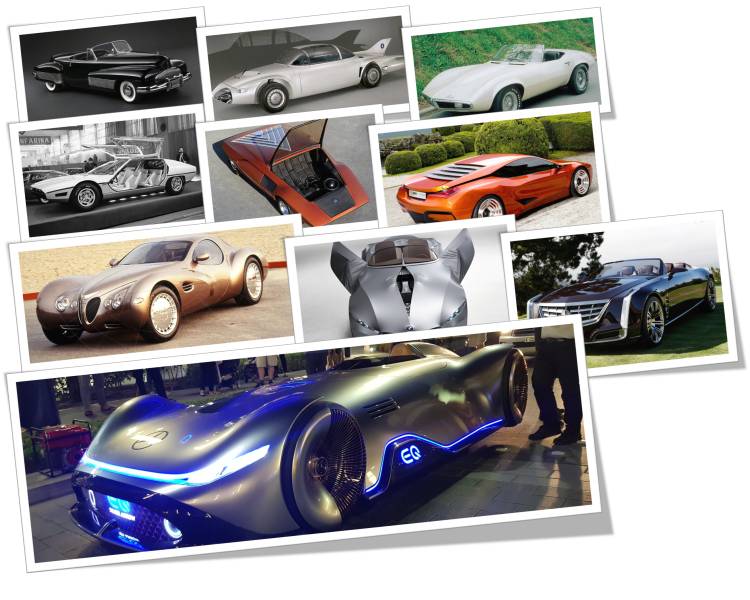
The maximum important idea cars ever shaped.
The most important prototypes of Cars in history.
Prototypes have often served as visionary models that revolutionized design and technology in the automotive industry. Some never reached production, but their impact has lasted for decades. Here are the most important prototypes of all time, each of which profoundly shaped the industry:
Table of Contents
The most important prototypes of Cars in history. 1
Key Features and Innovations: 3
Where is it currently located?. 4
Mechanical Specs (varied slightly between prototypes): 5
5. 1970 Lancia Stratos Zero. 7
6. 1980 BMW M1 Hommage (and the original M1) 8
Review: Chrysler Atlantic (1995) 10
8. 2001 BMW GINA Light, Visionary Model 11
Cadillac Ciel Concept Review.. 13
10. 2017 Mercedes-Benz Vision EQ Silver Arrow.. 14
___________________________________________________________
1. 1938 Buick Y-Job
- Designer: Harley Earl.
- Country: USA
The 1938 Buick Y-Job is widely recognized as the first concept car created by an American manufacturer. It was designed by Harley Earl, director of General Motors' Art and Color Division (later known as GM Design). The car never went into production, but served as a styling exercise and a roadshow for future technologies and design cues.
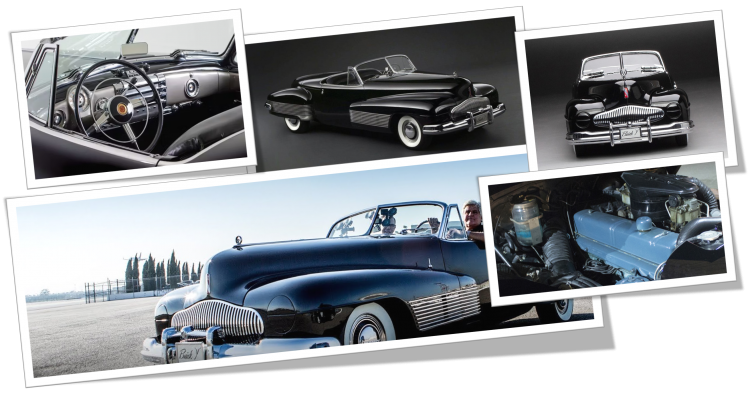
Key Features and Innovations:
- Designer: Harley Earl
- Manufactured by: General Motors
- Year Launched: 1938
- Platform: Based on the Buick chassis (Buick Super)
- Engine: Inline-eight engine (Buick Fireball 8)
- Transmission: Manual
- Body: Two-door convertible
- Color: Metallic gray (a rare option at the time)
Famous Innovations:
- Hidden electric headlights: later incorporated into production cars like the Corvette.
- Power liftgates: extremely rare in the 1930s.
- Flush door handles: a sleek, integrated shape that influenced future designs.
- Wraparound bumpers: for a more streamlined appearance.
- Integrated fenders: a step toward a modern, wraparound style.
Purpose:
- The Y-Job was never intended for sale. Instead, it was built to:
- Gage public reaction to new styling ideas.
- Inspire future production car designs.
- Showcase GM's innovation under Harley Earl.
- Earl personally used the car as his daily driver for several years, making it a very "real" prototype in terms of usability.
Where is it currently located?
- The Y-Job is preserved in the General Motors Heritage Collection and is occasionally displayed at auto shows and museums as a symbol of GM's design legacy.
_____________________________________________
2. 1956 GM Firebird II
- Why it's important: Introduced the gas turbine engine, autonomous driving concepts, and a titanium body.
- Impact: Explored the future of transportation with vehicle-to-vehicle communication and automated guidance systems.
The 1956 GM Firebird II was a stunning concept car produced by General Motors as part of its Firebird series: a trio of futuristic prototypes designed to explore the future of automotive design and road travel. The Firebird II was the second in the series and was heavily influenced by jet aircraft and space-age technology.
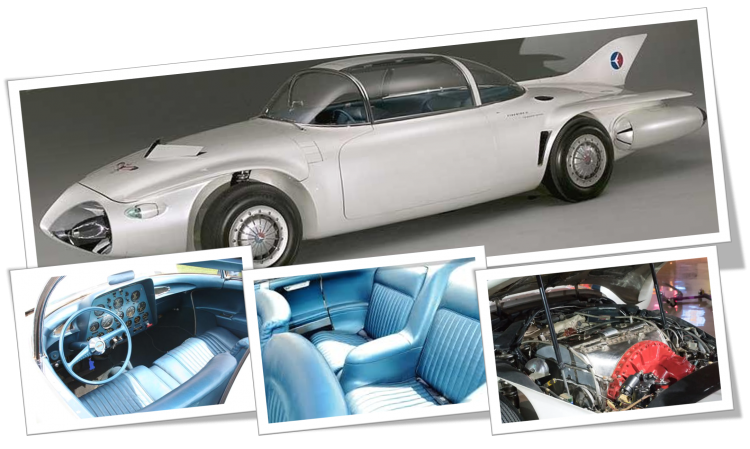
Key Specs and Features:
- Introduced: 1956 Motorama (GM's traveling auto show)
- Designed by Harley Earl and his GM Design Department
- Body: Titanium cladding over a steel frame (rare and innovative for its time)
- Seating: 4-passenger family sedan
- Powertrain:
- Gas turbine engine (Whirlfire TurboPower) - 200 hp
- Designed to run on kerosene, jet fuel, or gasoline.
- Drive System: Rear-wheel drive
- Transmission: Automatic, adapted for turbine use.
Future Features:
Self-Driving System (Concept): Envisioned driving on a "magic highway" using an electronic guidance system, representing the beginning of self-driving cars.
- Canopy Roof: Inspired by fighter jets, with a glass dome.
- Airplane-Style Controls: Includes joystick-style steering control instead of a traditional steering wheel.
- Air Conditioning and TV Screen: Forward-facing comfort and entertainment systems.
- Emphasis on Collision Safety: Introduced the idea of safety as a key element of automotive design.
Coming Vision:
The Firebird II was not intended for mass production, but it served as a symbol of GM's vision for the future of roads and transportation in the United States:
- "Electronic highways will guide the car and control steering and braking," GM explained at the time.
- This vision anticipated intelligent transportation systems by decades.
Where is it now?
The Firebird II is part of the General Motors Heritage Collection and is occasionally displayed in museums and automotive events.
_____________________________________________
3. 1964 Pontiac Banshee
- Why it matters: Precursor to the Chevrolet Corvette C3.
- Influence: Its sleek, aerodynamic styling directly influenced the muscle cars and sports cars of the late 1960s.
The 1964 Pontiac Banshee, also known internally as the XP-833, was a concept car developed by the Pontiac Division of General Motors under the direction of John DeLorean. It was conceived as a lightweight, high-performance sports car that would compete directly with the Chevrolet Corvette. However, its development was ultimately halted by GM Corporate to protect Corvette sales.
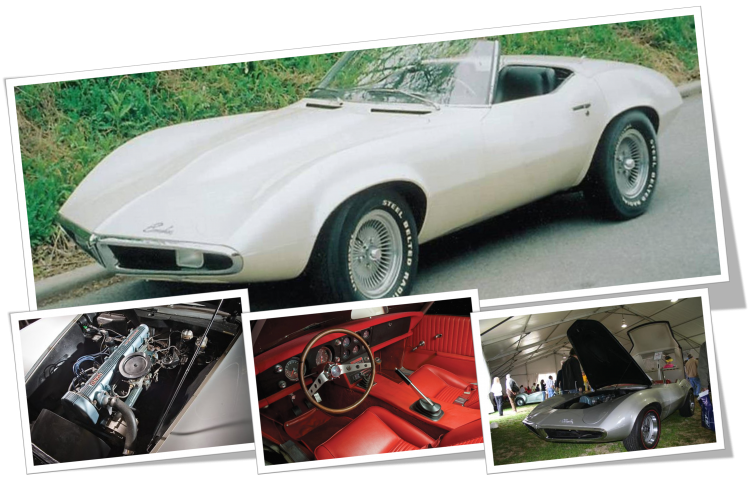
Main Specs:
- Model Name: Pontiac Banshee XP-833
- Development Year: 1964
- Designer: John DeLorean and Pontiac Studio
- Platform: Shortened Pontiac Tempest chassis
- Body: Fiberglass (two prototypes built: one coupe and one convertible)
Mechanical Specs (varied slightly between prototypes):
Engine Options:
- Inline-6 (230 cubic inches, manual transmission) - base version
- 326 cubic inch V8 (optional, over 280 hp)
- Transmission: Manual (4-speed)
- Drivetrain: Rear-wheel drive
Design Highlights:
- Long nose, short gear ratio: reminiscent of later sports cars like the Chevrolet Corvette C3 and the Opel GT.
- Pop-up headlights: a design detail used on many sports cars of the era.
- Fastback coupe and convertible versions
- Sleek, low body profile: very sporty and aerodynamic for its time
Reason for cancellation:
General Motors executives feared the Banshee would ruin sales of the Corvette, Chevrolet's flagship car. Since Pontiac was a low-priced brand, a cheaper and potentially faster Banshee posed an internal threat.
DeLorean was asked to shut down the project, although Banshee design elements would be retained in:
- Corvette (C3) 1968-1982
- Pontiac Firebird 1968
- Opel GT (Europe)
Surviving prototypes:
Only two Banshee XP-833 prototypes were built:
- Silver hardtop coupon (currently in a private collection)
- White convertible (also privately owned)
_____________________________________________
4. 1967 Lamborghini Marzl
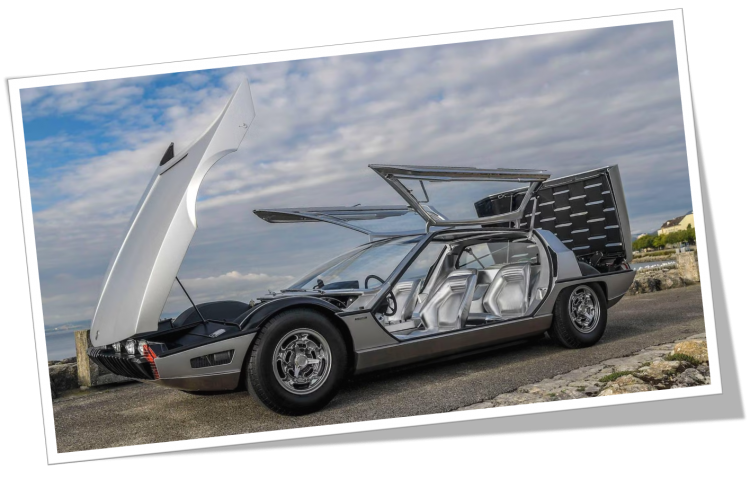
The 1967 Lamborghini Marzl is one of the most famous concept cars of the 1960s: a radical four-seat grand tourer designed by Marcello Gandini for Bertone and built on a Lamborghini chassis. It was created as a futuristic showcase of Lamborghini's prowess in luxury, performance, and avant-garde styling, and is one of the most visually striking concept cars ever created.
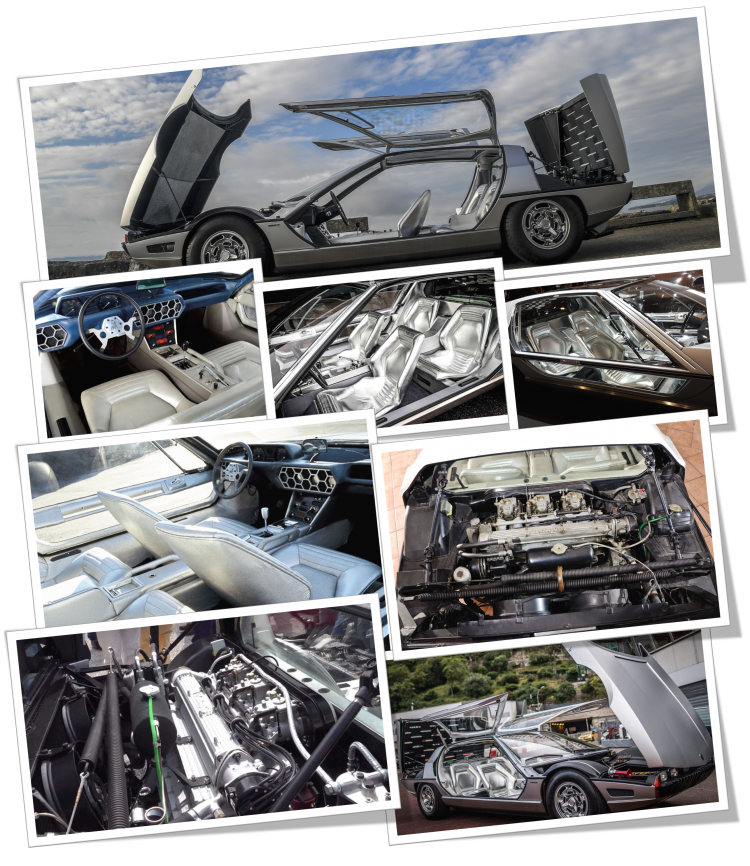
Key Specs:
- Name: Lamborghini Marzl
- Year: 1967
- Designer: Marcello Gandini at Bertone
- Chassis: Modified Lamborghini Miura platform
- Engine:
- 2.0L inline-6
- 175 hp
- Rear-wheel drive, transverse mounting
- Derived from half of the Lamborghini Miura's V12 engine
- Transmission: 5-speed manual
Design Highlights:
- Sliding glass doors: Large transparent doors that extend from the roofline to the waistline, offering a view into the interior.
- Hexagonal shapes: Widely used in the interior, they later became a hallmark of Lamborghini design.
- Silver metallic paint with a futuristic feel
- Louvred rear window
- Ultramodern interior: silver leather seats, hexagonal dashboard, and a sci-fi instrument cluster
Iconic appearance:
- The Marzel caused a sensation when driven by Prince Rainier III of Monaco, accompanied by Princess Grace Kelly, during the victory lap of the 1967 Monaco Grand Prix, instantly making it a cultural icon.
Purpose and legacy:
The Marzel was a design study, conceived to explore:
- A possible four-seater Lamborghini GT
- Advanced materials and glazing
- Lamborghini's future styling direction
Although it never saw production, the Marzel directly influenced the Lamborghini Espada (1968–1978), a successful four-seater GT that adopted many styling cues from the concept car.
Where is it now?
- The unique Marzl is housed in the Lamborghini Museum (Museo Automobile Lamborghini) or occasionally displayed at parties and historic events. It was auctioned by RM Sotheby's and still holds a great value.
_____________________________________________
5. 1970 Lancia Stratos Zero
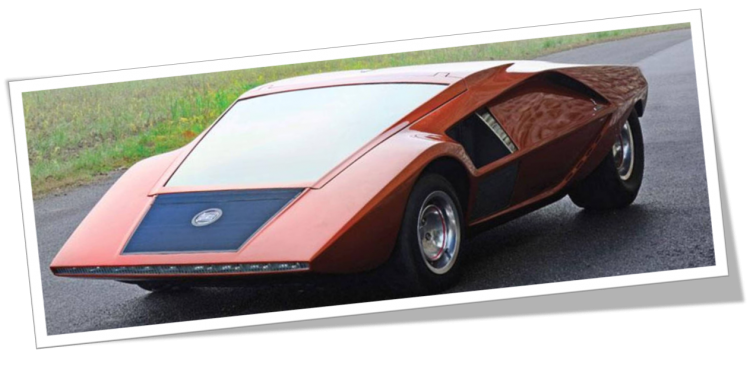
The 1970 Lancia Stratos Zero is one of the most radical and futuristic prototypes ever created: a wedge-shaped design masterpiece created by Marcello Gandini at Bertone. It stunned the automotive world with its extreme shapes and has since become an icon of prototype design.
Key Specs:
- Name: Lancia Stratos Zero
- Year of Introduction: 1970 (Turin Motor Show)
- Designer: Marcello Gandini for Bertone
- Chassis: Modified Lancia Fulvia HF

Engine:
- 1.6L V4 engine (from the Fulvia HF)
- Mid-mounted
- Approximately 115 hp
- Drive: Front-wheel drive (carried over from the Fulvia)
- Height: Just 83 cm (33 inches), lower than most supercars
Design Highlights:
- Extreme wedge shape: a major influence on 1970s supercar design
- No traditional doors: access is via a fold-down windshield.
- Integrated headlights: thin light strips on the bodywork.
- Sharp angles, geometric shapes: the car looks like something out of a science fiction movie.
- Copper/brass body color in medium tones, with black accents.
Interior and features:
- Minimalist and highly streamlined cabin.
- Two rear-reclining seats.
- The dashboard is integrated into the body with a futuristic display.
- Very limited visibility: designed as a work of art, not a road car.
Purpose and legacy:
The Stratos Zero was a mere design exercise aimed at:
- Showcasing Bertone's creativity and technical prowess.
- Engaging in dialogue with Lancia (which led to Bertone being awarded the design contract for the Lancia Stratos HF rally car).
- Although the Zero was never produced, its impact was enormous:
- The wedge design became a dominant theme in exotic cars of the 1970s (Lamborghini Countach, Lotus Esprit, etc.).
- The Stratos HF (1973) became one of the most famous rally cars in history.
Where is it now?
The Lancia Stratos Zero still exists and has been:
- Entered in major concours shows (e.g., Villa d'Este, Pebble Beach).
- Privately owned (sold by RM Sotheby's in 2011).
- Appeared in films such as Michael Jackson's "Moonwalker."
__________________________________________
6. 1980 BMW M1 Hommage (and the original M1)
The BMW M1 Hommage (2008) is a tribute car created to celebrate the 30th anniversary of the original BMW M1 (1978–1981), BMW’s first true supercar and the first road car produced by its high-performance division, BMW M GmbH. The Hommage concept car captures the spirit and geometry of the original with a modern, aggressive twist. ???? Original BMW M1 (E26)
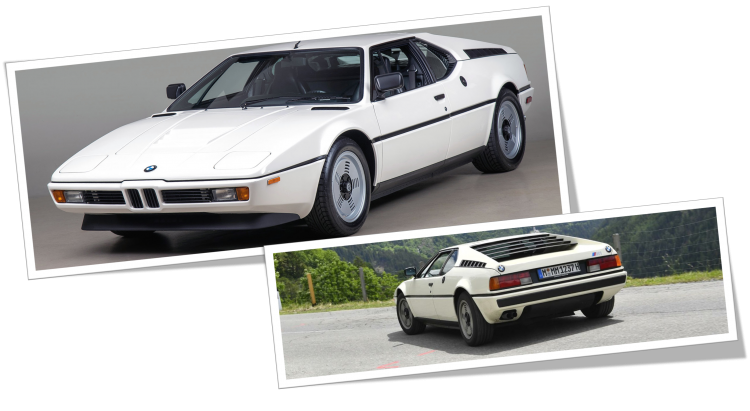
Key Specs:
- Production: 1978-1981 (453 units built)
- Engine: 3.5L inline 6-cylinder (BMW M88 DOHC)
- Power: 273 hp (road version), up to over 850 hp (racing version as the M1 Procar)
- 0-100 km/h: ~5.4 seconds
- Top Speed: ~260 km/h
- Transmission: 5-speed ZF manual
- Layout: Mid-engine, rear-wheel drive
Design:
- Designer: Giorgetto Giugiaro (Italdesign), based on a concept by Paul Brec
- Body: Fiberglass, low-wedge design, pop-up headlights
- Resolution: Originally conceived as a homologation car for Group 4 racing.
- Inheritance: The BMW M1 gave rise to the Procar Championship, where F1 drivers competed with identical M1s as a support category for Formula 1.
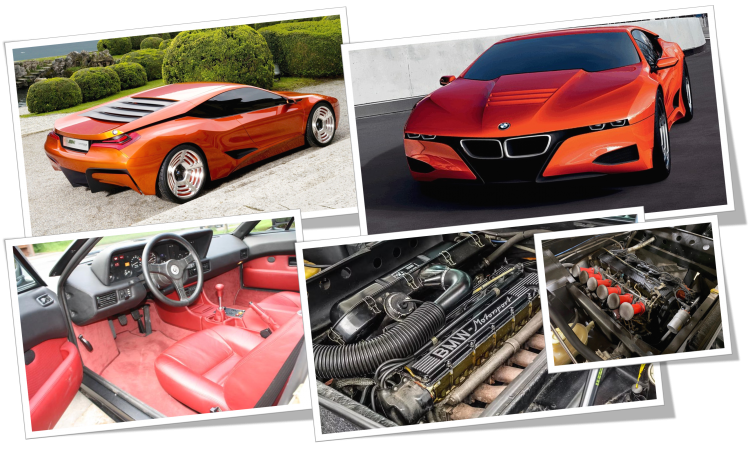
Significance:
- The first and only mid-engine production BMW (until the i8)
- One of the most collectible BMWs of all time
- Stunning styling and motorsport pedigree
BMW M1 Tribute (2008)
Prototype details:
- Presentation: Concorso d'Eleganza Villa d'Este 2008
- Engine: Unknown (never revealed; prototype inactive)
- Platform: Speculated to be based on the architecture of the BMW Z8
- Purpose: Pure design study, no production plans
Design Keys:
- Designer: BMW Group Design, Chris Bangle, and Adrian van Hoovdink
- Styling:
- Bold interpretation of Giugiaro's wedge shape
- Extremely aggressive stance, exaggerated air inlets and outlets
- Rear vents and kidney grilles pay homage to the original M1.
- Angular body panels with pronounced creases and stressed surfaces.
- Color: Metallic Orange with black accents: bold and futuristic.
Purpose and Legacy:
- Honoring 30 years of M1 heritage.
- Influenced later BMW concepts, such as the BMW Vision M NEXT (2019).
- Revived interest in a modern mid-engined M (although none reached production).
Key Differences:
- Features: BMW M1 (1978), M1 Hommage (2008).
- Engine: 3.5L I6 (M88). Unknown (prototype body).
- Purpose: Tribute to production and racing design.
- Designer: Giugiaro (Italdesign). BMW Design (Bangle/Hooydonk era).
- Production: 453 vehicles. 1 prototype.
- Notable Features: Pop-up headlights, wedge-shaped bodywork. Redesigned grille, deep creases, and louvers.
__________________________________________
7. 1995 Chrysler Atlantic
The 1995 Chrysler Atlantic is a stunning retro-futuristic concept car that Chrysler unveiled at the 1995 North American International Auto Show. It combined 1930s Art Deco elegance with 1990s engineering and became one of the most visually striking concept cars of its era.
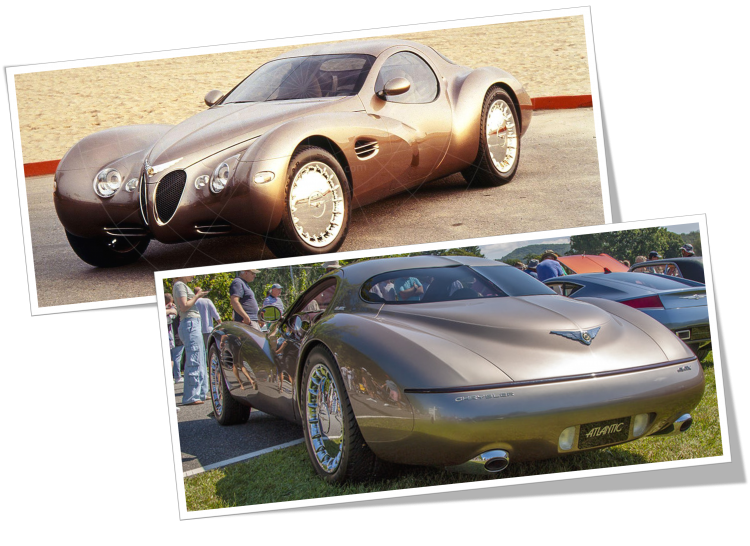
Review: Chrysler Atlantic (1995)
Key Specs:
- Engine:
- 4.0L inline-8 (created by merging two 2.0L DOHC Neon 4-cylinder engines)
- ~360 horsepower
- Transmission: 4-speed automatic
- Drivetrain: Rear-wheel drive
- Platform: Custom-built, not shared with any production vehicle
- Performance: 0-60 mph in approximately 6 seconds

Design Inspiration:
- Designer: Bob Hubbach (exterior), with Tom Gale (then Chrysler's chief designer)
- Style: A modern homage to the 1937 Bugatti Type 57SC Atlantic, one of the most iconic cars in automotive history.
- Body: Long hood, fastback rear end, teardrop fenders, and a flowing coupe profile.
- Color: Champagne/Dark Metallic Pewter
- Interior: Luxurious, with leather, chrome, and art deco gauges, designed to evoke a luxury yacht or pre-war grand tourer.
Purpose and Concept:
The Atlantic was never intended for mass production, but rather served to:
- Showcase Chrysler's renewed design talent after the 1990s under CEO Bob Lutz and chief designer Tom Gale.
- Discover the vision of a modern luxury GT that combined American innovation with European class.
- A testament to Chrysler's boldness in merging the elegance of the past with the avant-garde.
Legacy:
The Chrysler Atlantic is a one-off concept car, although it inspired the boldness of Chrysler products in the late 1990s.
- It still exists and is maintained by Stellantis (Chrysler's parent company) and is occasionally displayed at concours.
- Considered one of the best-designed American concept cars of the 1990s, both for its craftsmanship and originality.
Key Facts:
- Features: Description
- Only one unit built
- Inline-8 engine (based on the Neon)
- Design influenced by the 1937 Bugatti Atlantic
- Luxury Art Deco interior styling
- Rear-wheel drive
- Unique chassis platform
- Current location: Chrysler/Stellantis Collection
__________________________________________
8. 2001 BMW GINA Light, Visionary Model
The 2001 BMW GINA Light Visionary Model is one of the most radical and evocative concept cars BMW has ever built. The name GINA stands for "Geometry and Functions in 'N' Adaptations" and challenges traditional ideas about what a car should be, starting with the concept of a rigid body.

Purpose and Philosophy:
GINA wasn't focused on power or performance; it was a design and materials experiment created by BMW's Advanced Design Studio, led by Chris Bangle. Their question was:
"What if the car didn't look decent?"
Key Features:
1. Flexible Fabric Skin:
- The body is made of a tough, flexible spandex fabric coated with polyurethane, stretched over a movable aluminum wire frame.
- It is weather-resistant, durable, and translucent under light.
- There are no traditional body panels; The car's skin moves with the frame.

2. Adaptive Body:
The shape can change dynamically to meet functional needs:
- The hood opens by separating the fabric in half (as if peeling off a skin).
- The headlights emerge from beneath the fabric when needed.
- The rear spoiler extends by shifting the main subframe.
- The doors open like scissors, integrated into the fabric shell.
3. Chassis and Platform:
- Beneath the fabric shell lies a moving carbon fiber and aluminum chassis.
- It is built on a platform based on the Z8, with a front engine and rear-wheel drive.
- Engine: Specter V8 (from the BMW Z8), although performance details are irrelevant: GINA focuses on philosophy, not speed.
Design Philosophy:
GINA proposed that:
- A car can adapt to its environment, function, or user needs.
- The appearance of a vehicle can change, rather than being fixed in production. A car can become more organic, alive, and expressive, like a living organism.
- GINA blurred the lines between car, sculpture, and organism.
Where is it now?
- The GINA Visionary Lightweight Model is housed in the BMW Museum in Munich and is occasionally displayed in exhibitions focused on innovation and design. It has never been driven on public roads nor was it intended for series production.
Legacy and Impact:
- GINA inspired future BMW concepts such as Vision EfficientDynamics and Vision M NEXT.
- It influenced flexible design thinking in the automotive and technology industries.
- It became a cult icon in design education and futurist circles for its bold rejection of norms.
Instant Rows:
|
Feature |
Detail |
|
Name |
GINA Light Visionary Model |
|
Unveiled |
2001 (kept private until 2008) |
|
Designer |
Chris Bangle & BMW Advanced Design |
|
Body |
Flexible fabric skin |
|
Chassis |
Adjustable aluminum/carbon fiber frame |
|
Engine |
V8 (Z8-based, not performance-focused) |
|
Production |
1 prototype only |
|
Purpose |
Design and material exploration |
_____________________________________________
9. 2010 Cadillac Ciel
The 2010 Cadillac Ciel (pronounced "siel," which is French for "sky") is a stunning full-size convertible concept car, designed to embody open-air American luxury with a modern, eco-friendly twist. Unveiled at the 2011 Pebble Beach Concours d'Elegance, the Ciel represented Cadillac's bold vision for the 21st-century grand tourer, bringing the allure of open-top touring to life.
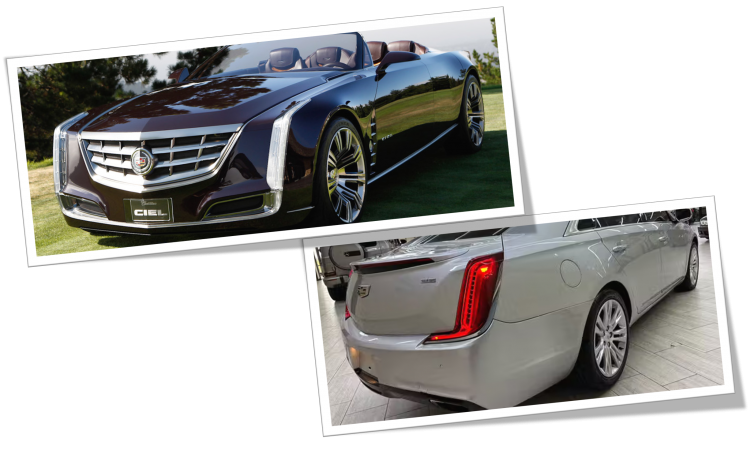
Cadillac Ciel Concept Review
Key Specs:
- Powertrain:
- 3.6L Twin-Turbo V6
- With Hybrid System (Lithium-Ion Battery)
- Total Production: Approx. 425 horsepower
- Powertrain: All-wheel drive
- Transmission: Automatic (unspecified, likely a high-torque GM unit)
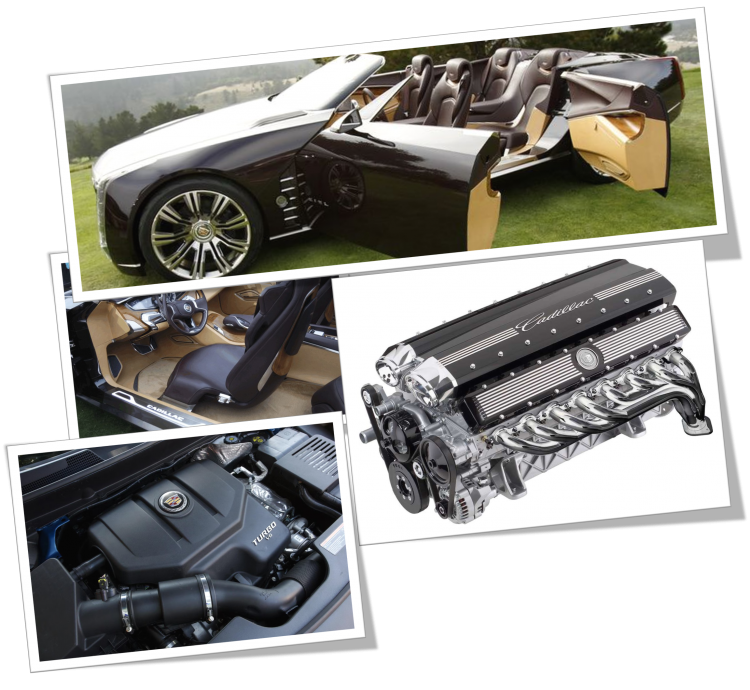
Design Highlights:
Exterior:
- Length: Almost as long as a full-size Escalade, giving it a commanding road presence.
- Four-door convertible: Rear suicide doors for striking elegance.
- Long hood, short gear ratio: classic American luxury silhouette.
- Full LED lighting, vertical daytime running lights (a Cadillac signature).
- Brushed aluminum trim, 22-inch wheels, and a flowing beltline.
- Color: Deep Cabernet Red evokes the luxury of wine country.
Interior:
- Handcrafted cabin: Inspired by the California coast and Napa Valley.
- Materials: Olive wood trim, premium leather, machined aluminum.
- Individual bucket seats for all four passengers.
- Humidification system with seasonal scent.
- A digital instrument panel merges with analog-inspired luxury.
Philosophy and Purpose:
- The Ciel was not built to pursue performance standards, but to imagine American luxury in an era of environmental awareness and luxury. Its goal was to create a sensation:
"The sun runs up and down the Pacific Coast Highway."
Production Status:
- A one-off prototype; no production model was planned.
- However, it influenced Cadillac's subsequent design language, most notably in prototypes such as the Elmiraj (2013) and the Celestiq (2023), an ultra-luxury electric vehicle.
_____________________________________________
10. 2017 Mercedes-Benz Vision EQ Silver Arrow
The 2017 Mercedes-Benz Vision EQ Silver Arrow is a spectacular all-electric concept car, designed to pay homage to the legendary W125 Rekordwagen, a sleek, silver-painted land speed racer from 1937.
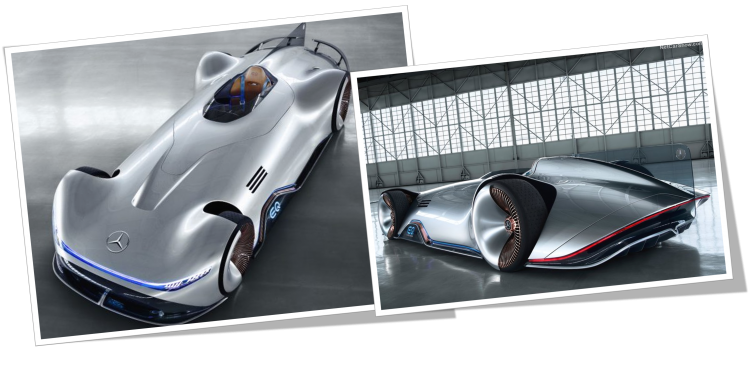
Key Specs (Prototype):
- Powertrain: All-electric
- Engine Power: 750 hp (560 kW)
- Battery: 80 kWh lithium-ion (theoretical)
- Range: Approximately 400 kilometers (250 miles) (WLTP)
- Drivetrain: Rear-wheel drive
- Top Speed: Prototype; no top speeds. Focus on Aesthetics and Design

Exterior:
- Single-seat cockpit: like that of a futuristic Formula 1 car
- Long, low bodywork, inspired by the "Silver Arrows" of the 1930s
- Body Material: Carbon fiber monocoque with Alubeam Silver paint
- Active Aerodynamics: The retractable rear spoiler acts as an air brake.
- Wheels: 24" front, 26" rear, turbine-style with partially closed bodywork.
Interior:
- Open cockpit with leather seats and polished aluminum accents.
- Curved digital panoramic display behind the steering wheel
- Touchscreen integrated into the steering wheel
- Virtual Race Assistant: Allows drivers to race ghost cars of Mercedes legends of the past (e.g., Juan Manuel Fangio) using augmented reality.
Debut and Display:
- Presented at: 2018 Pebble Beach Concours d’ elegance (concept development began in 2017)
- Head of Design: Gordon Wagner (Director of Design, Daimler AG)
- Currently: Occasionally displayed at Mercedes-Benz events and museums
_____________________________________________
Worthy References
- Renault Espace F1 (1995): A Formula 1-powered minivan: ridiculous and legendary.
- Ford GT90 (1995): A hyper car concept inspired by the GT40. It served as Ford's design halo.
- Italdesign Aztec (1988): A science-fiction-inspired double-cab prototype.
- Citroën Karin (1980): A pyramid-shaped vision of the future.
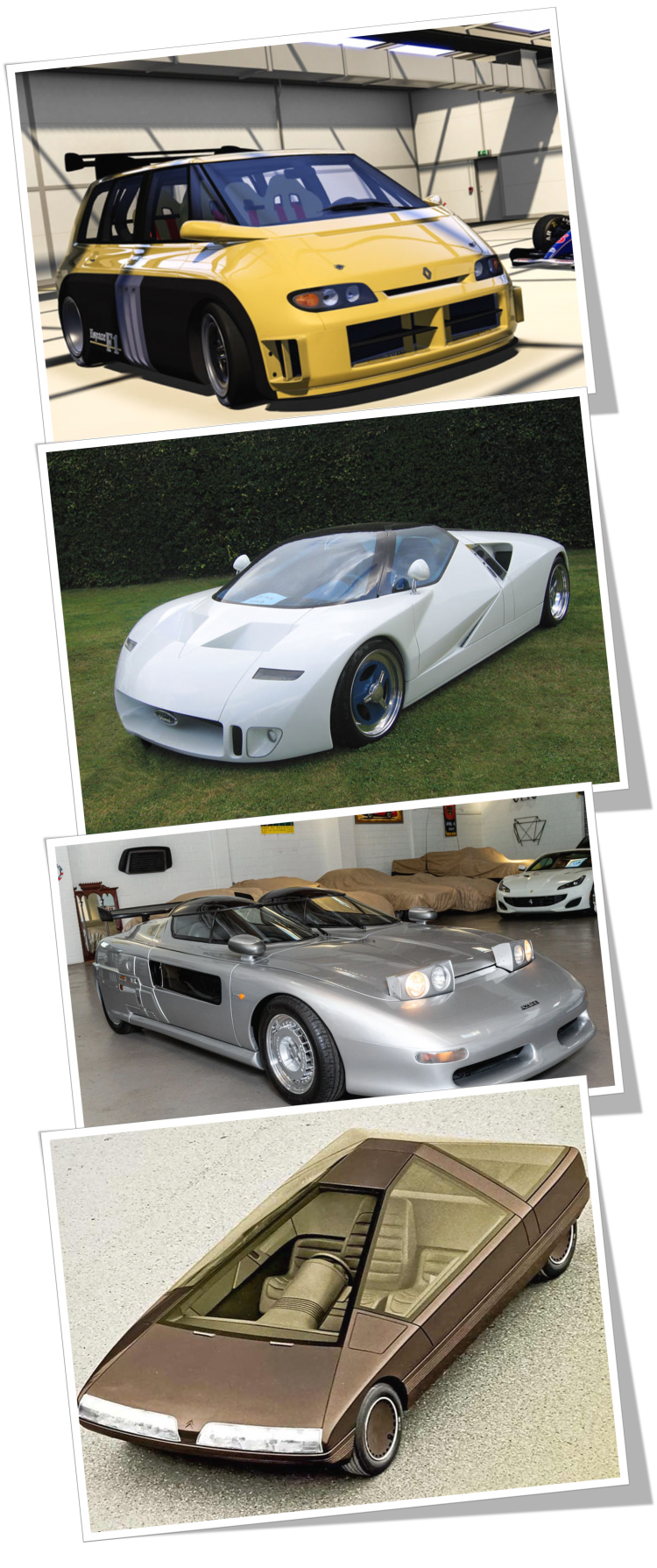
thanks
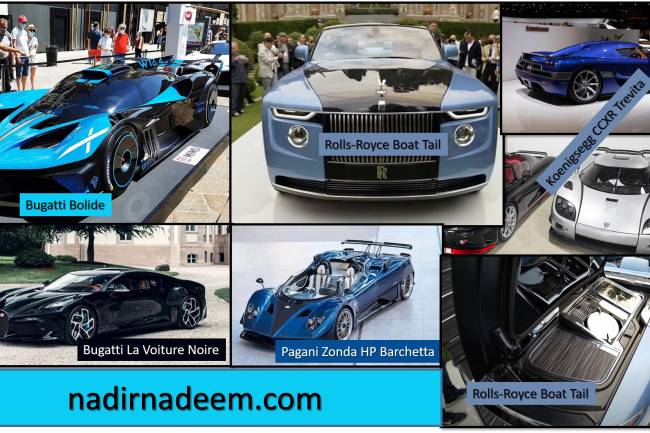
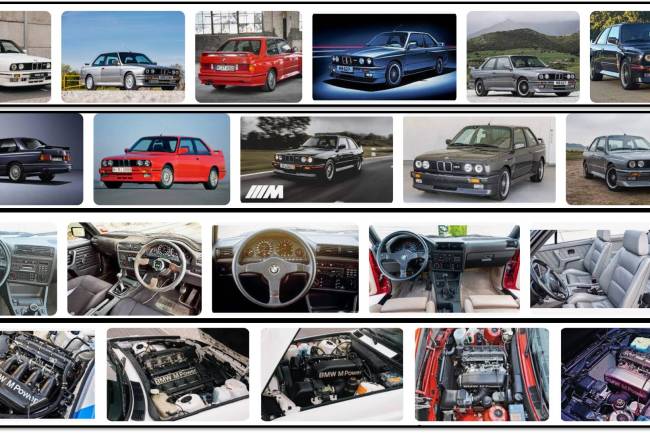
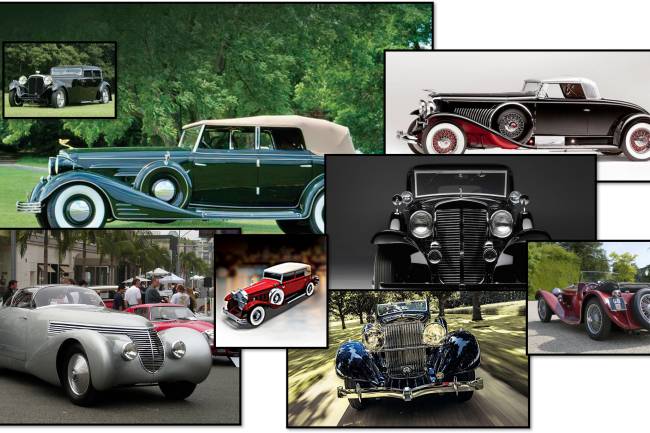
















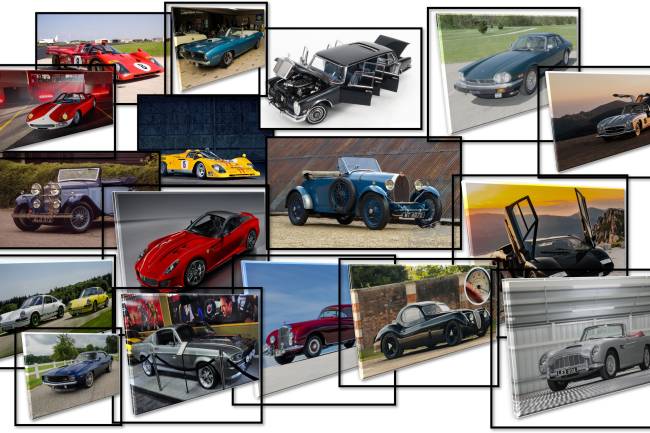
Jerry
Discover Your Perfect Feathered Friend at Parrot FarmHouse ???? https://parrotfarmhouse.com Based in Germany, Parrot FarmHouse is your trusted online pet shop for parrots across Europe and the UK. We specialize in Macaws, African Greys, Amazons, Cockatoos, and Eclectus Parrots, plus fertile parrot eggs (seasonal) and parrot incubators. Our birds are healthy, hand-raised, and ready for loving homes. Whether you're in Berlin, London, Paris, or anywhere in Europe, we deliver safely to your doorstep! ???? Order Now at ParrotFarmHouse.com – Your new companion awaits! https://parrotfarmhouse.com/product/moluccan-cockatoo-parrot-babies-for-sale-1-3-months/